Gravel bikes are fast and off-road capable. Can the Trek Supercaliber 9.8 GX keep up in terms of versatility or even emerge as the test winner from our bike concept comparison of gravel and mountain bikes? That’s exactly what we found out for you. You can find all the details and our riding impressions here.
Get an overview of the grouptest here: Gravel vs. mountain bike – 6 models on test

Born for the cross-country race track, tested in direct comparison to the most versatile bike concepts between gravel and mountain bikes. The Trek Supercaliber 9.8 GX weighs in at 10.6 kg in size L, which is very light for a full suspension XC bike, but a tad heavy for a full suspension gravel bike. Can it shine even more with other values?
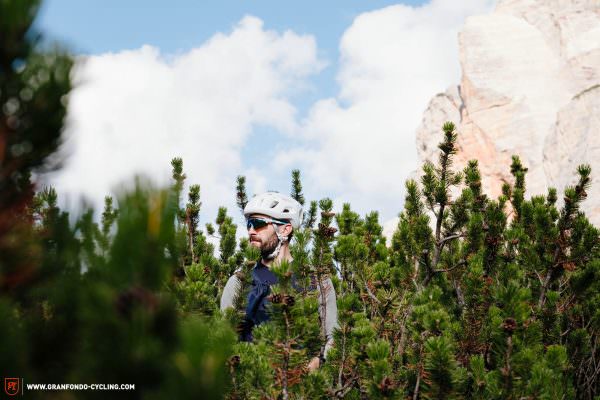
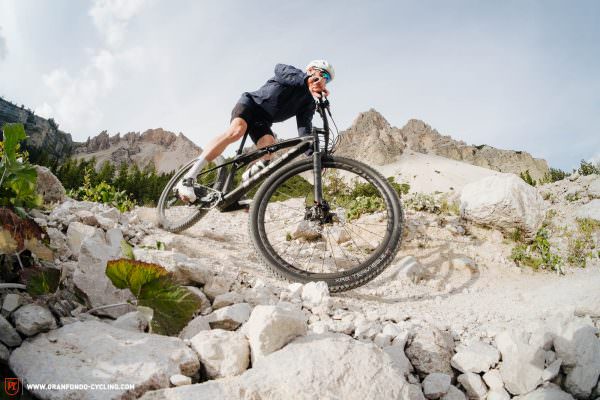
Trek Supercaliber 9.8 GX in detail
While the Supercaliber is the second full suspension concept in the test field alongside the BMC URS LT, it is the only bike that can be adjusted to the rider’s individual needs and preferences in terms of damping and spring stiffness at both the front and rear. The IsoStrut shock and the pivotless rear triangle is a unique system with 6 cm of travel. With a conventional rear suspension, the shock is a separate unit that is actuated via a linkage. With the Supercaliber, the shock body is integrated into the frame, allowing considerable weight savings. The shock and FOX Performance 32 Step-Cast suspension fork with 100 mm travel can be locked out at the touch of a button via the handlebar remote. Bitter aftertaste: with 5 cables sprouting from it, the Supercaliber has by far the most cluttered cockpit in the test field.
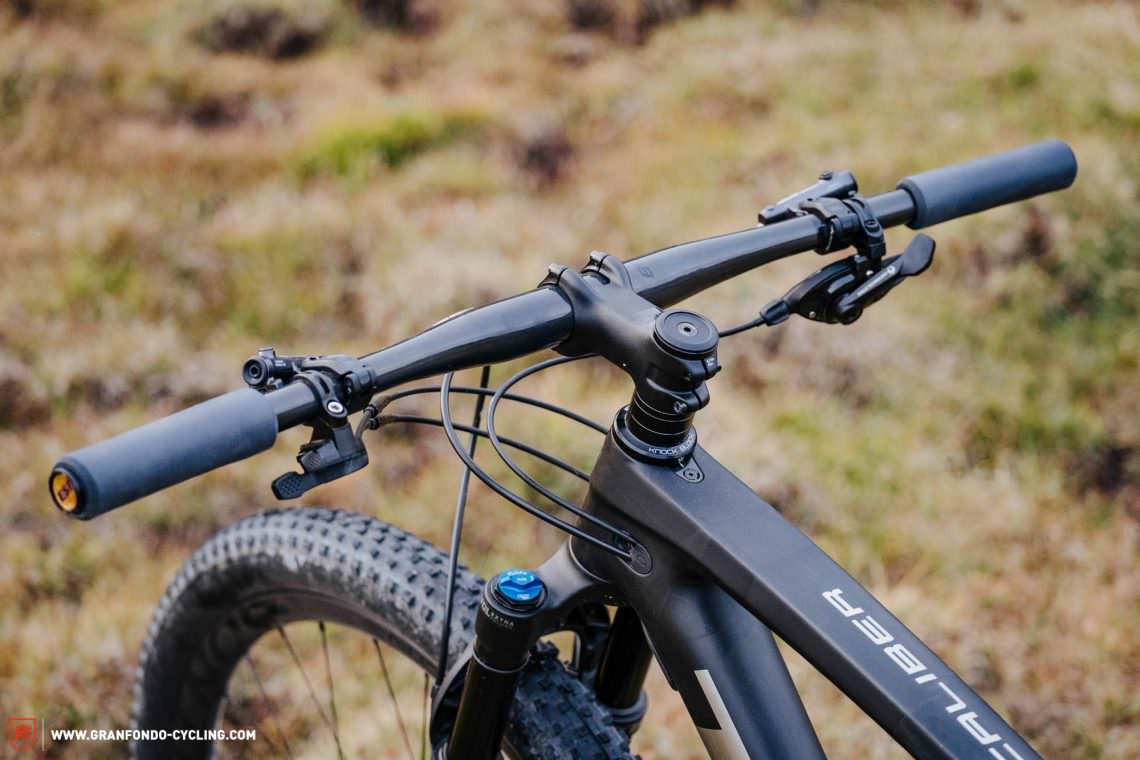
The Bontrager handlebar and the ESI grips convince with great ergonomics and damping. The limited flexibility in terms of hand positions ultimately limits the versatility of the Supercaliber a bit too much for the test victory.
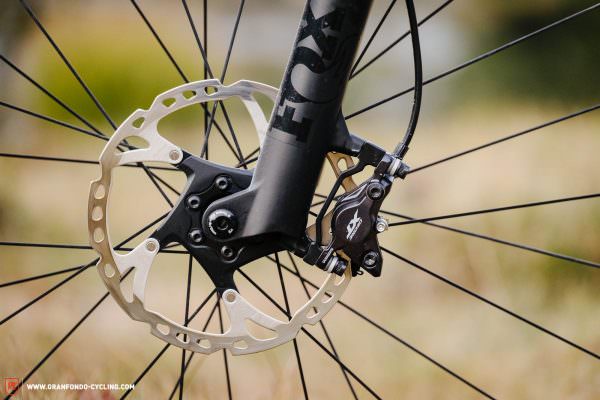
The Shimano DEORE XT BR-M8100 brakes with 180/160 mm rotors have a lot of power and stability, great! With some time spent getting used to this power, you can modulate them well. Novices might be surprised by the deceleration if they pull on the brake levers too hard.
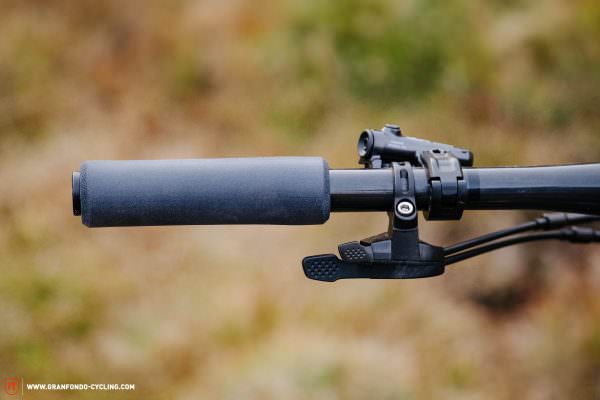
A handlebar remote with two functions: the lockout of the fork and shock can be opened and closed with one finger. Except for the 10 km road section, we found no need for it.
Trek Supercaliber 9.8 GX
€ 5,499
Specifications
Fork FOX Performance 32 Step-Cast 100 mm
Seatpost Bontrager Pro
Brakes Shimano DEORE XT BR-M8100 180/160 mm
Drivetrain SRAM GX Eagle 1x12
Stem Bontrager Kovee Pro 90 mm
Handlebar Bontrager Kovee Pro 720 mm
Wheelset Bontrager Kovee Pro 30
Tires Bontrager XR2 Team Issue 29" x 2.20"
Technical Data
Size S M M/L L XL XXL
Weight 10.6 kg
Specific Features
IsoStrut shock with 60 mm travel integrated into the top tube
space for 2 large bottles in the roomy main triangle
fork and shock can be completely locked out via the bar remote
Knock Block steering limiter protects the frame from damage

Trek’s exclusive IsoStrut shock is an innovative suspension design that generates 60 mm of damped and tunable travel. At its heart is a shock that is integrated into the top tube and a pivotless rear triangle with flex stays.
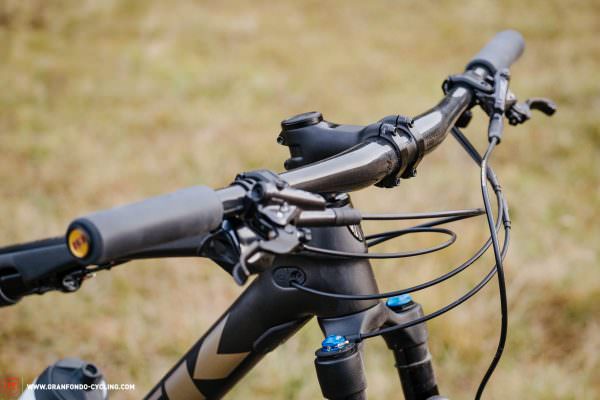
2x brake lines, 1x shift cable, 2x cables for the lockout. The cockpit is a hive of activity. Compared to the competition, it’s also a bit too cluttered.
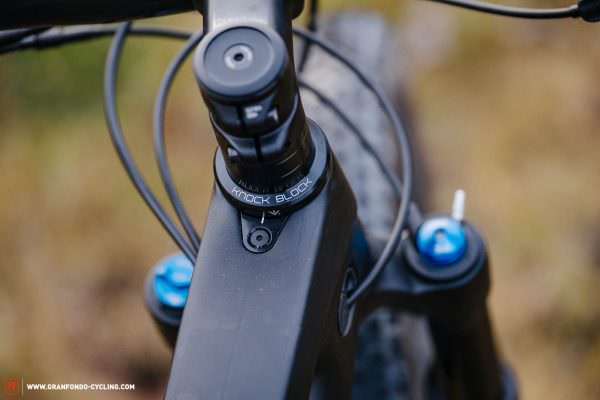
The Knock Block integrated into the headset prevents the handlebar from turning too far in the event of a crash. This makes damage to the frame significantly less likely. While riding, there’s absolutely no effect on the steering.
In terms of ergonomics and damping, the ESI Grips Silicone Grips deserve a mention, as does the pleasant level of compliance of the 720 mm Bontrager Kovee Pro handlebar. Our testers also like the Knock Block handlebar stop, as it protects the top tube from being hit by the handlebar in the event of a crash, without impinging on your riding at all. The geometry is absolutely race-oriented. The Trek has the shortest head tube in the history of mankind which allows for a very low front end, as is often preferred by XC racers. On steep uphills, it effectively helps prevent the front from lifting and generally puts a lot of pressure on the front wheel and thus increases itstraction. Our € 5,499 test bike does away with a dropper, instead speccing the 31.6 mm Bontrager Pro carbon seat post. However, Trek also offers the Supercaliber as a build with a dropper post.
If you’re not a fan of underbiking and prefer to be prepared for anything, go gravel riding with the Trek and you’ll be just as fast in the real world.
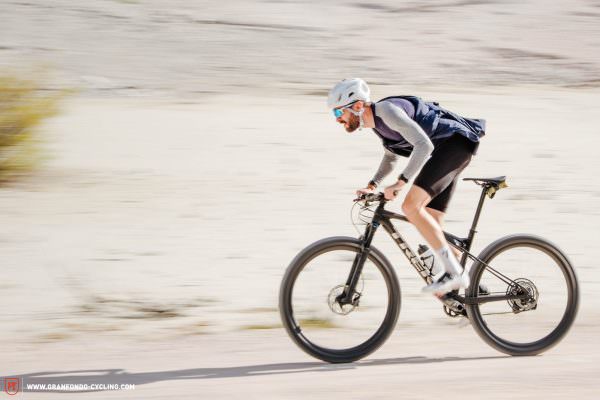
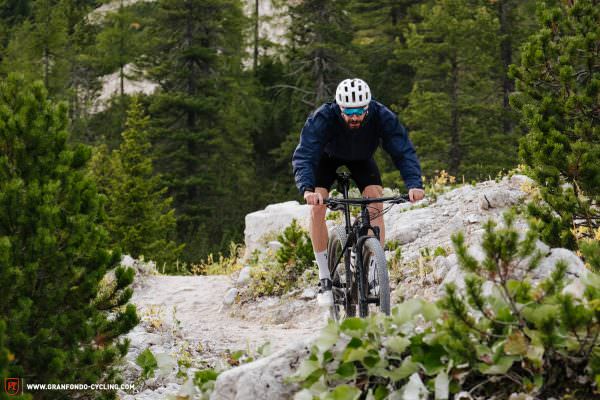
| Size | S | M | ML | L | XL | XXL |
|---|---|---|---|---|---|---|
| Seat tube | 394 mm | 419 mm | 445 mm | 470 mm | 508 mm | 546 mm |
| Top tube | 565 mm | 595 mm | 610 mm | 625 mm | 659 mm | 683 mm |
| Head tube | 90 mm | 90 mm | 90 mm | 90 mm | 105 mm | 120 mm |
| Head angle | 69.0° | 69.0° | 69.0° | 69.0° | 69.0° | 69.0° |
| Seat angle | 70.0° | 70.5° | 70.5° | 71.0° | 71.0° | 71.0° |
| Chainstays | 430 mm | 430 mm | 430 mm | 430 mm | 430 mm | 430 mm |
| BB Drop | 53 mm | 53 mm | 53 mm | 53 mm | 53 mm | 53 mm |
| Wheelbase | 1,079 mm | 1,106 mm | 1,121 mm | 1,136 mm | 1,172 mm | 1,197 mm |
| Reach | 395 mm | 425 mm | 440 mm | 455 mm | 485 mm | 505 mm |
| Stack | 594 mm | 594 mm | 594 mm | 594 mm | 608 mm | 622 mm |

Jersey Velocio Men’s Micromodal Jersey | Shorts Velocio Men’s Thermal Bib Short
Shoes Suplest Crosscountry Pro | Socks VOID Socks 16
The Trek mountain bike on test: our riding impressions
When it comes to acceleration, the Trek charges ahead. Its direct and willing acceleration is, surprisingly, nippier and faster than the BMC Twostroke and sits only just behind the Canyon Grizl. When climbing, there’s no bobbing on the road or hardpack thanks to the lockout – instead, the bike marches light-footed and willingly uphill. On rough gravel, you should open the lockout when climbing. This allows the Trek to maintain maximum traction without diving away beneath you. The handling is also intuitive, predictable and stable on the uphills and at a slower pace. This makes it easy to navigate tight turns at low speeds. Like its electronic and wireless AXS counterparts on the BMC bikes, the SRAM GX Eagle mechanical groupset has a huge 520% range. However, in direct comparison to the electronic options, it needs higher operating forces and a bit more time for shifting. Compared to the other mechanical groupset, like Shimano GRX RX800 fitted to the Fustle Causeway TRAIL Lite and Canyon, it is, however, significantly crisper. Thanks to the generous gear range and its good traction, the Trek becomes an absolute off-road speed all-rounder. Alongside the suspension and frame compliance, the 29 x 2.20″ Bontrager XR2 Team Issue tires mounted on the in-house Bontrager Kovee Pro 30 wheels also have their share in this. Compared to the Vittoria tires on the Twostroke, they offer more immediate propulsion and less rolling resistance on hard surfaces. Compared to a gravel bike, the Trek rolls on a very competitive wheel and tire system and is even faster than the Fustle. So, all in all, a combination that absolutely works!
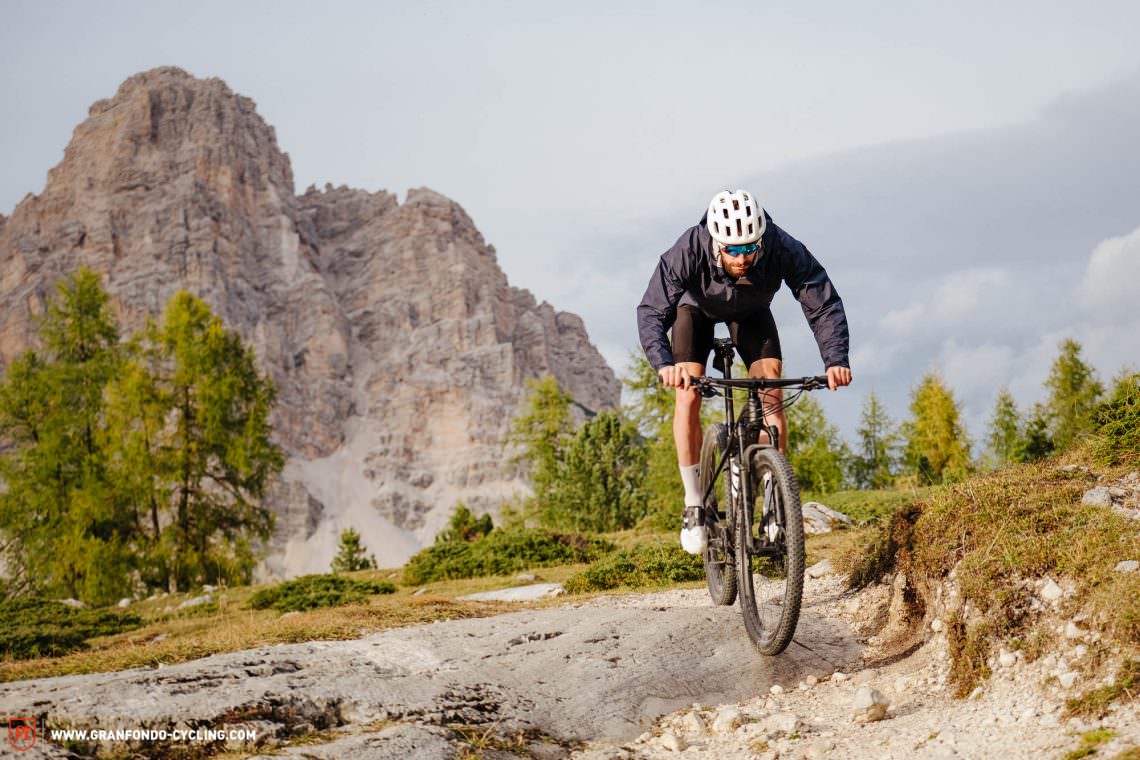
On the trail, the Supercaliber plays to its strengths compared to the test field and delivers a lot of safety and traction. The lack of a dropper post is less annoying on the Trek than on the BMC Twostroke. The reason for this is the slacker seat tube angle, which puts the saddle a little further back and leaves it less in the way. On very steep downhill sections, a dropper post would still be an advantage, though you’ll have to take the weight penalty into account. When exploring roots and gravel, the Trek shines with a very high level of comfort, even on rough surfaces. At the same time, it proves to be very efficient, as obstacles are easily rolled over and swallowed up by the suspension. On gravel highways, the bike feels almost bored. Here it’s a case of putting your head down, pushing on the pedals and pressing fast forward. Fortunately, this isn’t a problem at all, as you can push the Trek over the flats at 35 km/h for a while – assuming some requisite fitness. However, after some time, the lack of options to change position on the bars and your upper body acting as a brake in the wind becomes annoying.

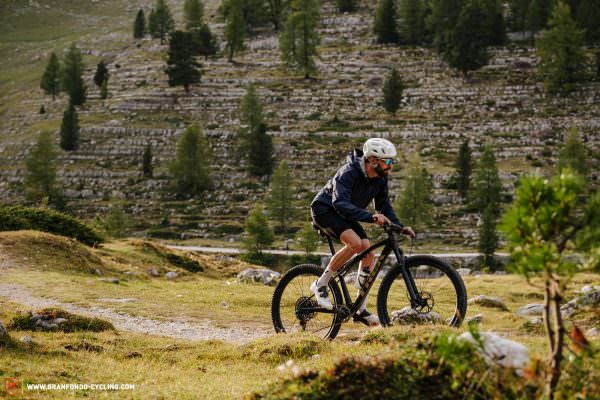
Tuning tip: dropper post for more trail performance (of course, bar ends for more grip positions are barred by the style police).
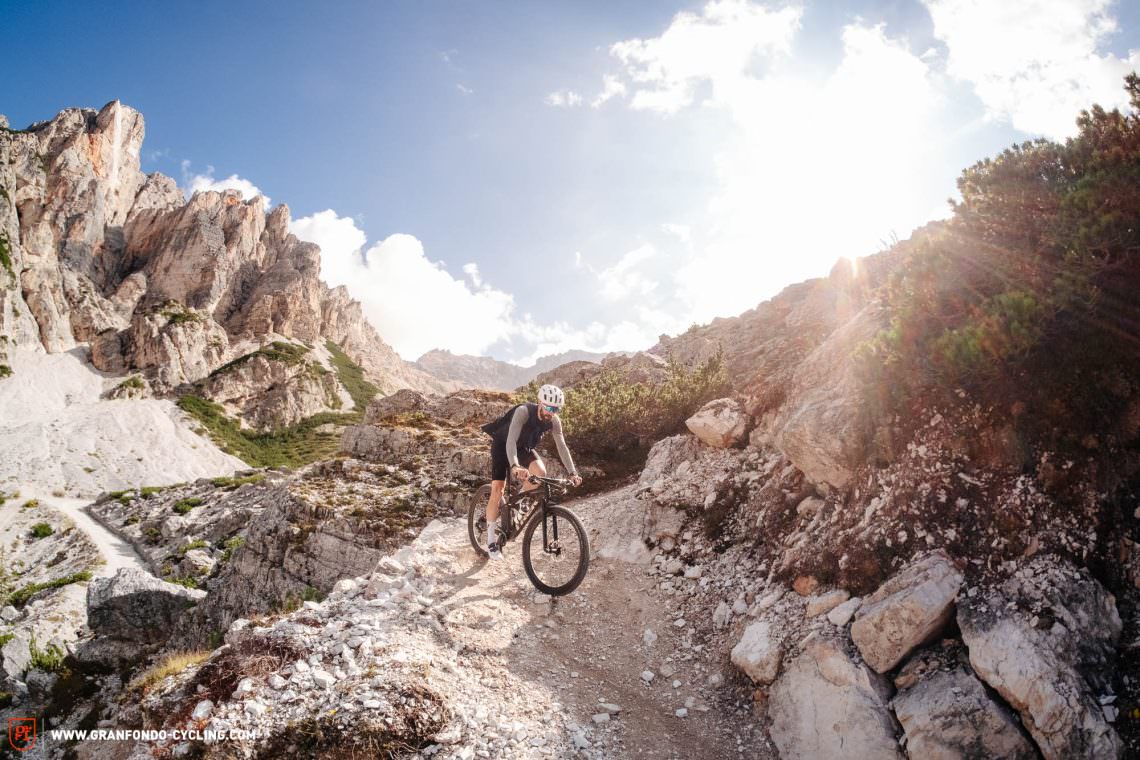
The perfect application for the Supercaliber 9.8 GX
With a surprisingly wide range of applications, the Trek more than surprised our testers. Its range of use is as wide as with the Lauf, but is oriented quite a bit further towards off-road riding. While it loses some trail performance with its missing dropper post, it still scores with maximum traction, riding fun and the best trail performance in the test field for all skill levels. However, for touring or bikepacking, you have to come to terms with the limited bar positions. If you mainly want to get from A to B quickly off-road, there is no better concept in this group test.
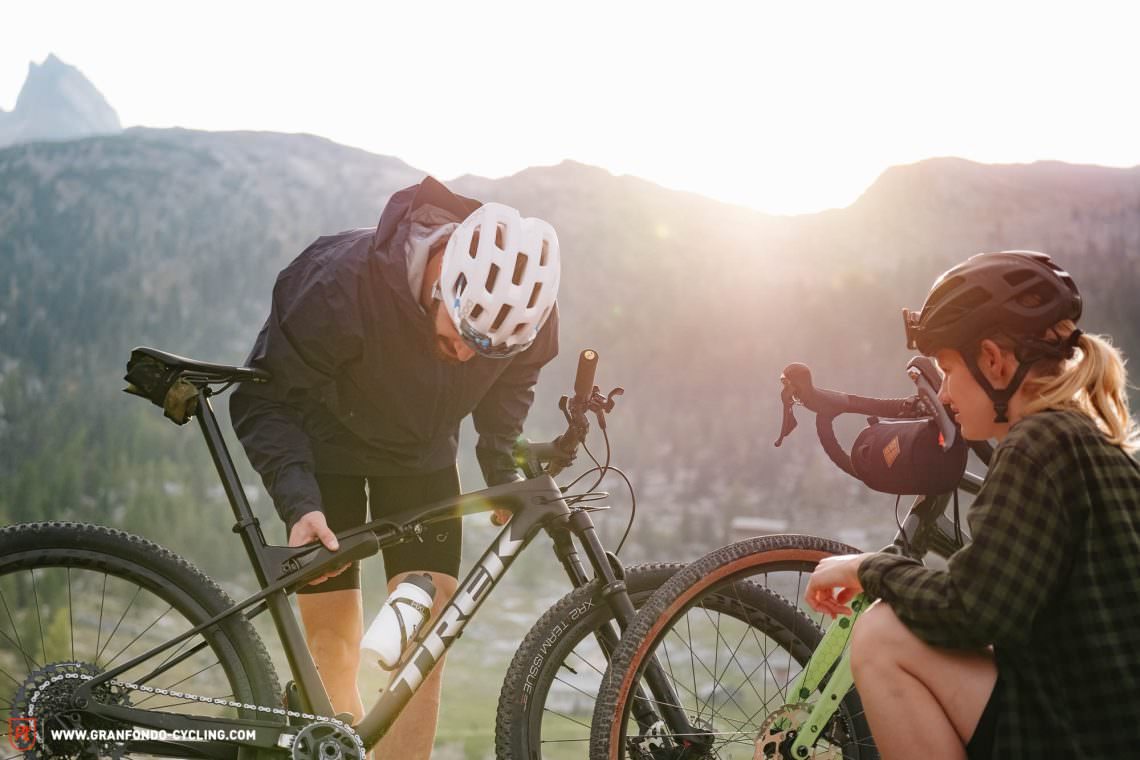
Technical Data
Trek
Supercaliber 9.8 GX
Size: S M M/L L XL XXL
Weight: 10.6 kg
Price: € 5,499
Trek Supercaliber 9.8 GX conclusion
The Trek Supercaliber is the definition of an off-road speed all-rounder and readily generates speed everywhere thanks to its enormous traction and low weight. Those who mostly avoid the road and can cope with the mountain bike position will find the better concept here compared to a gravel bike. However, in terms of versatility, the Trek ultimately has to admit defeat to the Lauf concept by a narrow margin. A very strong 2nd place!
Tops
- innovative full suspension system
- extremely wide range of applications
- conveys a lot of confidence and safety in many situations
- off-road speed all-rounder
Flops
- cable chaos on the cockpit
- missing dropper post limits the range of use unnecessarily

You can find out more about at trekbikes.com
The test field
Get an overview of the grouptest here: Gravel vs. mountain bike – 6 models on test
All bikes in test: BMC Twostroke 01 ONE (Click for review) | BMC URS LT ONE (Click for review) | Canyon Grizl CF SL 8 1by (Click for review) | Fustle Causeway TRAIL Lite (Click for review) | Lauf True Grit SRAM XPLR Edition (Click for review) | Trek Supercaliber 9.8 GX
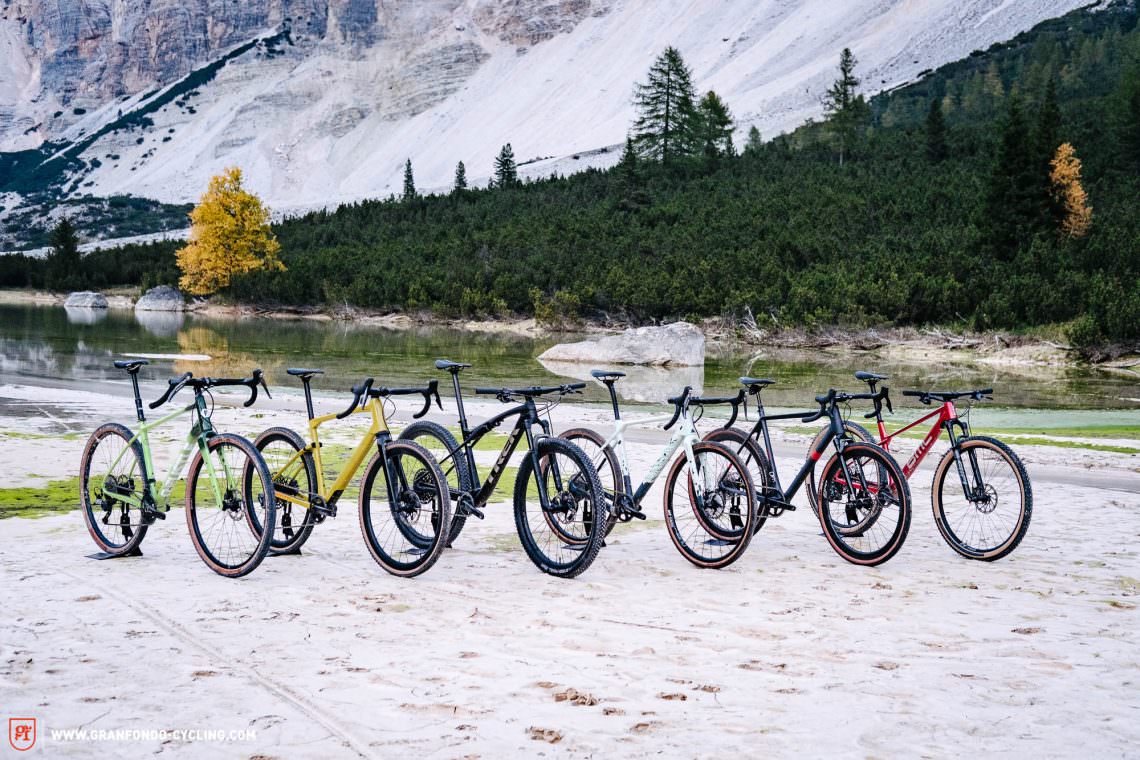
No, it’s not about perfect race tracks, it’s about efficiency. Fast, fleet-footed and efficient – those who want to speed along high-speed passages need a defined and spritely bike that accelerates with ease and efficiency. Nevertheless, reliable components are important too. We interpret “Smooth tarmac” bikes as follows: Hard efforts at high speeds with a maximum efficient bike on a consistently well-paved road. Effort-joy ratio: 80:30 (not everything has to be 100%!)↩
… also known as bike riding. Broken-up roads in the hinterland, deadlocked gravel roads, loose surfaces – sometimes muddy, sometimes bone-dry. For this, it takes bikes with super all-round, handling and wearing qualities uphill and downhill. Effort-joy ratio: 50:50↩
Did you enjoy this article? If so, we would be stoked if you decide to support us with a monthly contribution. By becoming a supporter of GRAN FONDO, you will help secure a sustainable future for high-quality cycling journalism. Click here to learn more.
Words: Photos: Peter Walker, Benjamin Topf







